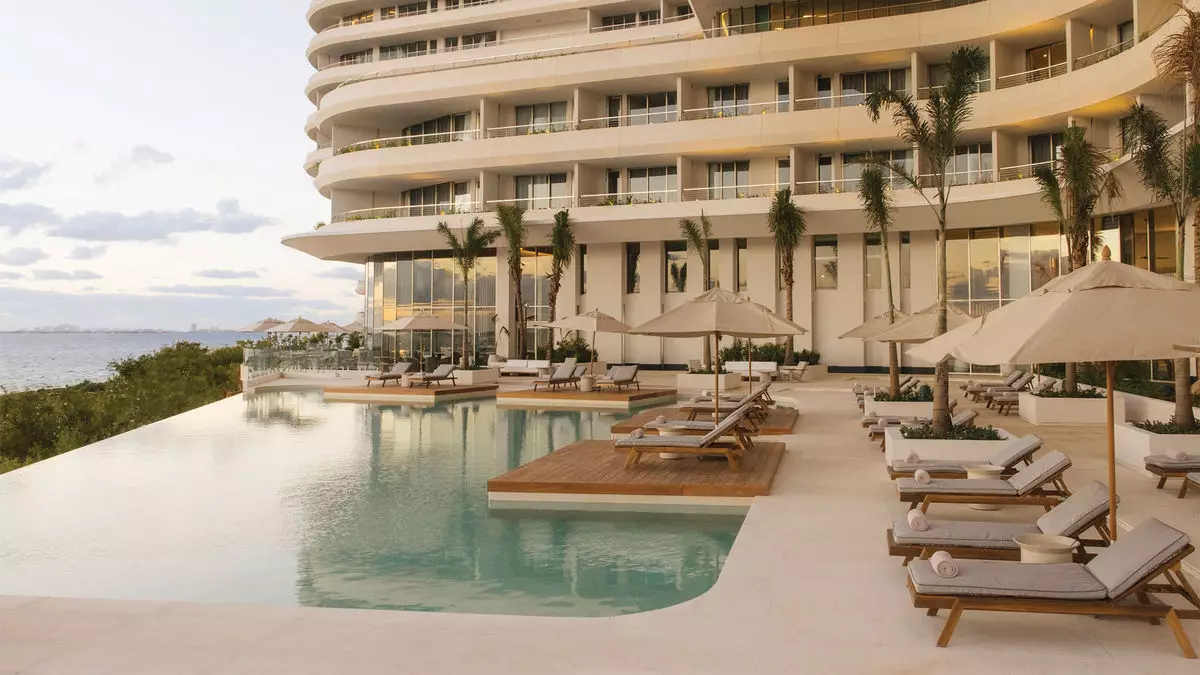In recent years, the luxury hospitality sector has witnessed a remarkable transformation, moving towards a model that emphasizes longevity and wellness. What was once largely a niche market is rapidly evolving into a battleground where various high-end resorts and wellness centers vie for the attention of health-conscious, affluent travelers. This “wellness arms race,” as some have termed it, is fueled by an increasing demand for advanced medical treatments that promise not only longer lives but also a more vibrant existence during those years. A growing segment of ultra-wealthy individuals is now pursuing innovative wellness solutions, willing to invest significant amounts of money for state-of-the-art therapies that aim to prolong their health.
The Global Wellness Institute, a nonprofit organization dedicated to research in the wellness sector, has identified medical-wellness longevity clinics as one of the fastest-growing business categories worldwide. This burgeoning interest in longevity is spurred by societal shifts, including an aging population that is increasingly dissatisfied with traditional models of healthcare. Individuals are increasingly disenchanted with conventional medical institutions, which often prioritize reactive rather than preventive care. In search of alternatives, many affluent consumers are turning to the concierge-style medical-wellness options that luxury hotels and resorts now offer.
Several factors have contributed to this rise in demand for expensive wellness treatments. The pandemic significantly impacted wealth distribution, leading to a surge in disposable income among the richest Americans. As many consumers emerged with newfound financial freedom, they sought out personalized experiences that promised not only relaxation but also health optimization. It’s important to note that this quest for longevity isn’t merely about luxury; it’s tied to a deeper cultural shift towards valuing health and well-being, where preventative care is becoming as important as treatment.
The willingness to pay exorbitant fees for exclusive treatments highlights the stakes involved in this wellness competition. Traditional spa services, which might cost around $500, pale in comparison to some of the longevity treatments available, which can reach upwards of $25,000 or even more. For instance, the Four Seasons Resort Maui has partnered with Next Health to provide a range of advanced medical procedures, including a staggering $44,000 longevity protocol. This entry-level pricing suggests a significant gap between conventional wellness options and what is now being promoted as cutting-edge health optimization.
As luxury brands explore the burgeoning medical-wellness space, collaborations and innovative offerings are becoming commonplace. One notable effort is The Estate, a hotel brand launched by SBE in conjunction with wellness guru Tony Robbins. This initiative aims to create a chain of properties focused on preventive medicine and cutting-edge diagnostics. The ambitious plan includes 15 hotels and urban preventive-medicine centers, signaling a commitment to expanding the model of wellness resorts into a comprehensive lifestyle brand.
Established wellness giants, including Canyon Ranch and Six Senses, are not simply sitting back; they are keenly aware of the competitive landscape and are continually evolving to meet emerging demands. For example, Canyon Ranch recently unveiled a $20,000 program titled Longevity8, which offers extensive diagnostic assessments and personalized health strategies, further pushing the boundaries of what luxury wellness can entail. Similarly, Six Senses introduced its RoseBar concept, blending holistic wellness with medical interventions at its Ibiza location.
However, while innovation and expansion demonstrate a dedication to meeting consumer needs, they also expose some underlying challenges. As multiple brands enter the space, the definitions of “wellness” and “longevity” become increasingly nebulous, leading to potential consumer confusion. The industry is at risk of diluting these concepts, as every resort seems to claim a stake in the wellness narrative. The rapid expansion could also lead to market saturation, especially as newer players join the market, all vying for the attention of a select demographic.
As the luxury wellness market becomes more crowded, a pivotal question remains: What does the future hold for medical wellness tourism? The increasing emphasis on personalized wellness experiences, coupled with broader societal shifts towards health consciousness, suggests a promising outlook. However, it is essential for service providers to create clear distinctions in their offerings to avoid confusing potential clients. The need for greater transparency about what constitutes genuine wellness versus mere marketing is crucial as the market expands.
To navigate this evolving landscape successfully, businesses must balance innovation with clarity, ensuring that they offer tangible health benefits rather than just fluffy promises. The challenge will be finding a way to sustain growth without compromising the integrity of what wellness truly means. As consumers continue to explore the intersection of luxury and health, the race for longevity will likely intensify, creating a new paradigm in hospitality that could redefine how we perceive wellness in the years to come.

